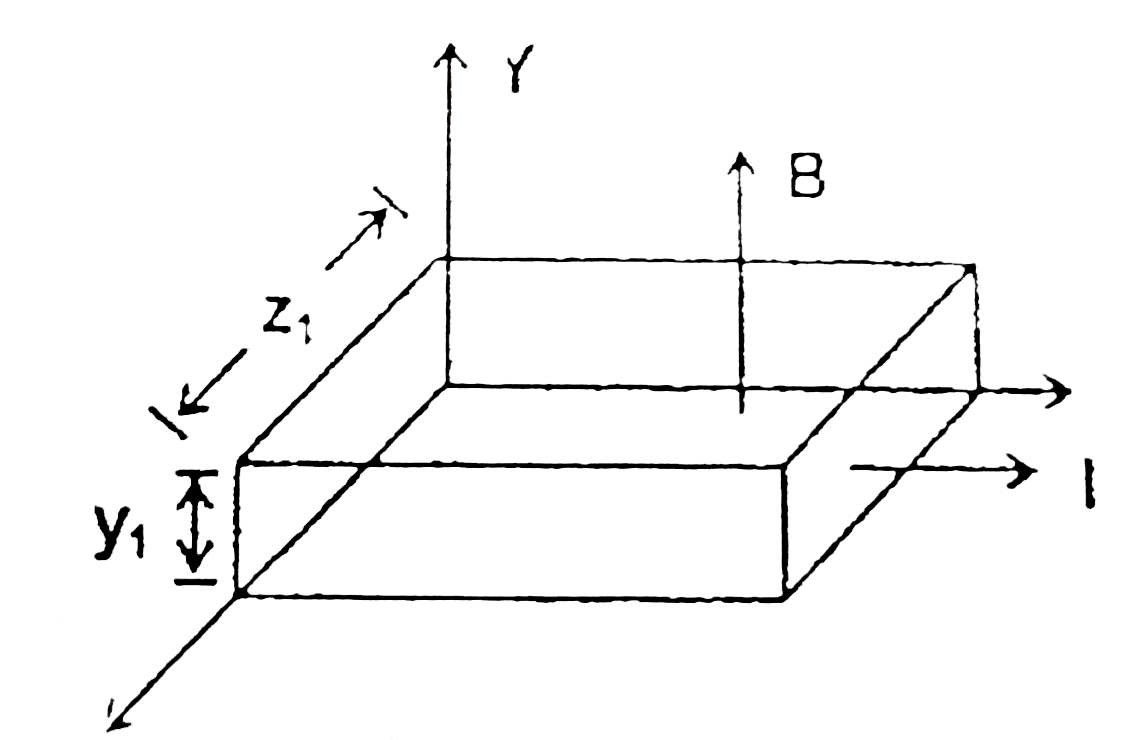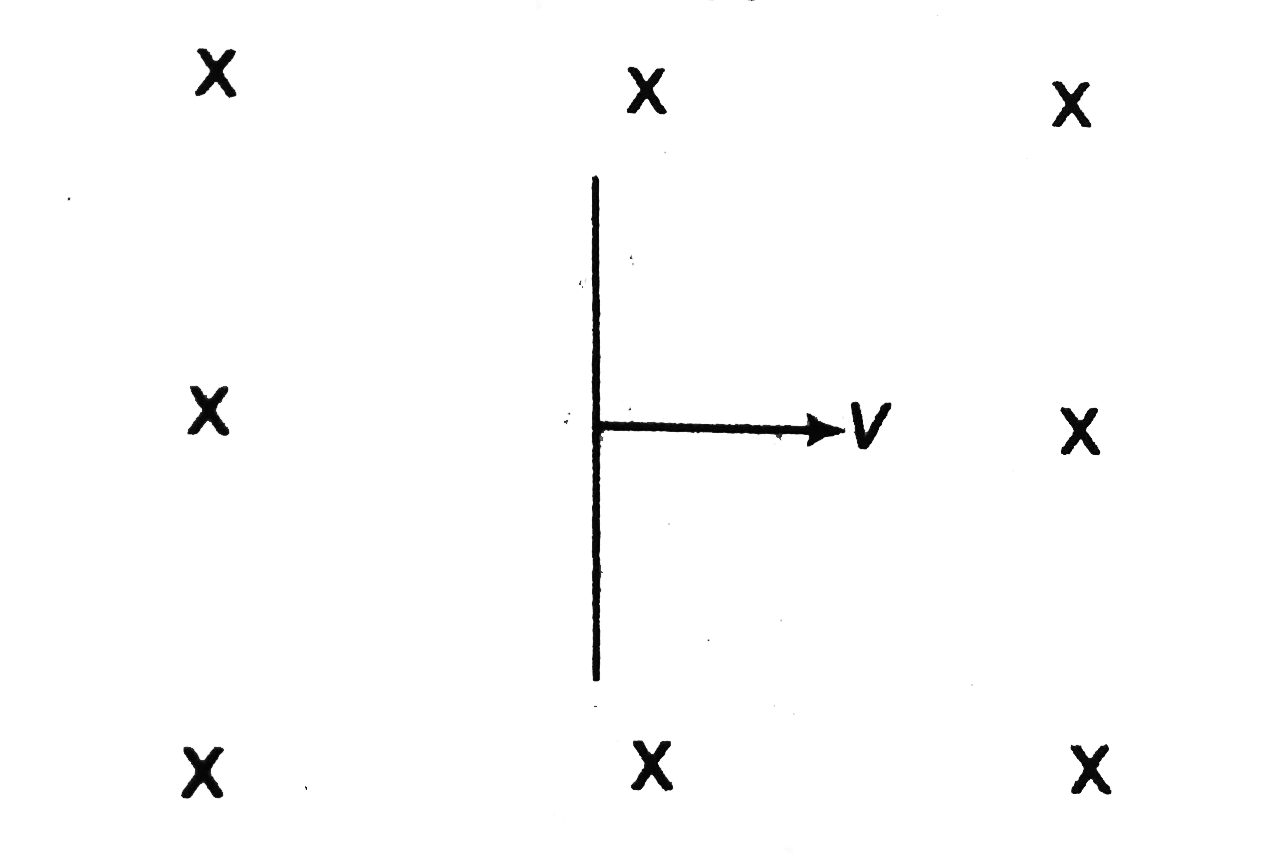The basic principle underlying the Hall effect is the Lorentz force. When an electron moves along a direction perpendicular to an applied magnetic field, it experiences a force acting normal to both the directions and moves in response to this force and the force exerted by the internal electric field. For an n-type, bar-shaped semiconductor, the carriers are predominantly electrons of bulk density n. We assume that the constant current I flows along the x-axis from left to right in the presence of a magnetic field toward y-axis. Electrons subjected to the lorentz force initially drift away from the current line toward the negative z-axis, resulting in an excess surface electrical charge on the sides of the sample. This charge results in the hall voltage, a potential drop across the two sides of the sample.
The transverse voltage is the hall voltage VH and its magnitude is equal to IB/qnd, where I is the current, B is the magnetic field, d is the sample thickness and q is the elementary charge. A silver ribbon lies as shown in the adjacent figure. (z1=11.8mm and y1=0.23mm) carrying a current of 120A in the x-direction in a uniform magnetic field B=0.95T. If electron density is 5.85×1028/m3, then
Magnitude of the drift velocity of elelctrons is

2.35mm/s
4.7mm/s
7.05mm/s
9.4mm/s
Step by step video & image solution for The basic principle underlying the Hall effect is the Lorentz force. When an electron moves along a direction perpendicular to an applied magnetic field, it experiences a force acting normal to both the directions and moves in response to this force and the force exerted by the internal electric field. For an n-type, "bar"-shaped semiconductor, the carriers are predominantly electrons of bulk density n. We assume that the constant current I flows along the x-axis from left to right in the presence of a magnetic field toward y-axis. Electrons subjected to the lorentz force initially drift away from the current line toward the negative z-axis, resulting in an excess surface electrical charge on the sides of the sample. This charge results in the hall voltage, a potential drop across the two sides of the sample. The transverse voltage is the hall voltage V_(H) and its magnitude is equal to IB//qnd, where I is the current, B is the magnetic field, d is the sample thickness and q is the elementary charge. A silver ribbon lies as shown in the adjacent figure. (z_(1)=11.8 mm and y_(1)=0.23 mm) carrying a current of 120 A in the x-direction in a uniform magnetic field B=0.95 T. If electron density is 5.85xx10^(28)//m^(3), then Magnitude of the drift velocity of elelctrons is by Physics experts to help you in doubts & scoring excellent marks in Class 12 exams.
Updated on:21/07/2023Similar Questions
The basic principle underlying the Hall effect is the Lorentz force. When an electron moves along a direction perpendicular to an applied magnetic field, it experiences a force acting normal to both the directions and moves in response to this force and the force exerted by the internal electric field. For an n-type, bar-shaped semiconductor, the carriers are predominantly electrons of bulk density n. We assume that the constant current I flows along the x-axis from left to right in the presence of a magnetic field toward y-axis. Electrons subjected to the lorentz force initially drift away from the current line toward the negative z-axis, resulting in an excess surface electrical charge on the sides of the sample. This charge results in the hall voltage, a potential drop across the two sides of the sample.
The transverse voltage is the hall voltage VH and its magnitude is equal to IB/qnd, where I is the current, B is the magnetic field, d is the sample thickness and q is the elementary charge. A silver ribbon lies as shown in the adjacent figure. (z1=11.8mm and y1=0.23mm) carrying a current of 120A in the x-direction in a uniform magnetic field B=0.95T. If electron density is 5.85×1028/m3, then
What is the value of hall emf ?

View SolutionA charged particle moving in a magnetic field experiences a resultant force
View SolutionWill a current loop placed in a magnetic field always experience a zero force?
View SolutionAs the bar shown in figure moves in a direction perpendicular to the field, is an external force required to keep it moving with constant speed.

View SolutionA charge q moves region in a electric field E and the magnetic field B both exist, then the force on its is
View SolutionWhen an electron is accelerated through a potential difference V, it experience a force F through as uniform transverse magnetic field. If the potential difference is increased to 2V, the force experoenced by the electron in the same magnetic field is
View SolutionA current carrying conductor placed in a magnetic field experiences maximum force when angle between current and magnetic field is :
View SolutionAn electron moving towards the east enters a magnetic field directed towards the north. The force on the electron will be directed
View SolutionAssertion : Magnetic force is always perpendicualr to the magnetic field.
Reason : Electric force is along the direction of electric field.
View SolutionIf a proton is projected in a direction perpendicular to a uniform magnetic field with velocity v and and electron is projected along the line of force, what will happen to proton and electron?
View Solution
